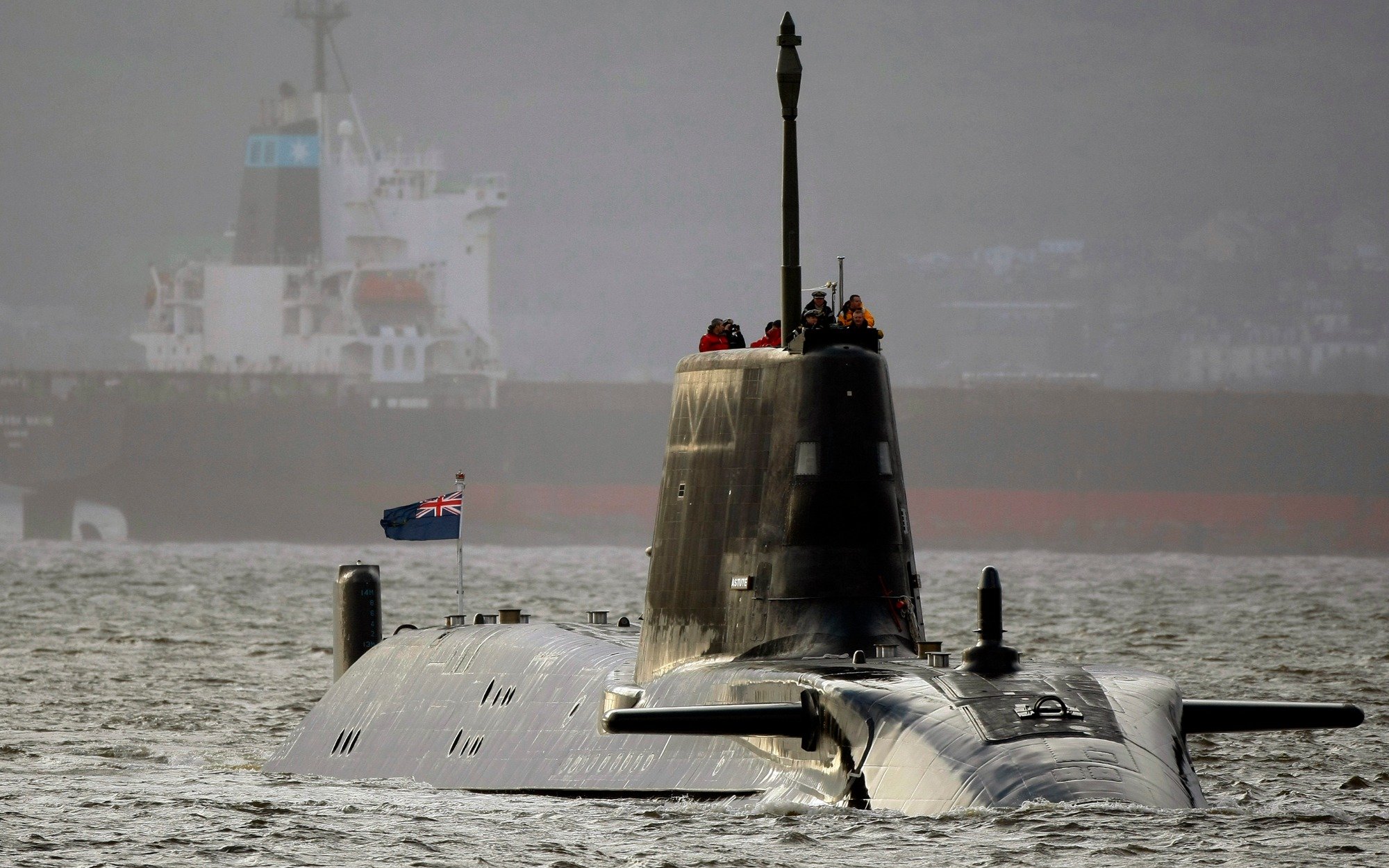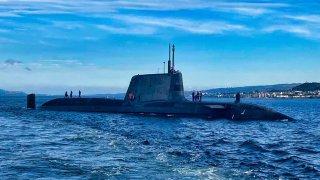Meet HMS Anson: The Royal Navy's Cutting-Edge Nuclear Attack Submarine
HMS Anson, the Royal Navy's newest Astute-class submarine, recently conducted successful sea trials off the U.S. east coast and the Caribbean, including the Bahamas' AUTEC.
Summary: HMS Anson, the Royal Navy's newest Astute-class submarine, recently conducted successful sea trials off the U.S. east coast and the Caribbean, including the Bahamas' AUTEC.

-These tests, which included firings of Spearfish torpedoes and Tomahawk missiles, aimed to validate the submarine's capabilities in detecting and engaging enemy submarines.
-The Astute-class, known for their advanced technology, stealth capabilities, and nuclear power, are the largest and most advanced submarines operated by the Royal Navy.
Here Comes the Submarine HMS Anson
The Royal Navy announced this week that its "newest and most advanced hunter-killer submarine" has conducted sea trials off the east coast of the United States and the Caribbean Sea, where it tested the nuclear-powered sub's systems and weaponry. HMS Anson (S124) had departed the UK's shipyard in Barrow-in-Furness in February last year, and subsequently conducted tests in waters off the UK coast before heading north of Scotland to test her weapons systems with successful firings of both Spearfish and Tomahawk test missiles.
"The tests and trials intensified into the Atlantic as Anson headed to the Atlantic Undersea Test and Evaluation Center (AUTEC) in the waters around the Bahamas," the Royal Navy said in its statement.
Commissioned in late 2022, she is the fifth Astute-class boat and eighth Royal Navy vessel to bear the name – honoring the 18th century Admiral George Anson.
Tests in the Tongue of the Ocean
The recent tests were conducted beneath the surface near the Atlantic Undersea Test and Evaluation Center (AUTEC) in the ranges off Andros Island, just southwest of Nassau, Bahamas.
According to Naval Sea Systems Command, "AUTEC provides instrumented operational areas in a real world environment to satisfy research, development, test and evaluation requirements and operational performance assessment of war fighter readiness in support of the full spectrum of maritime warfare."
During the trials, Royal Navy and U.S. Navy technical specialists were also able to make use of the "Tongue of the Ocean" – a huge deep-water basin carved out of coral reef. The 20-mile-wide, 150-mile-long natural phenomenon is "crammed with sensors and hydrophones to record reams of data displaying how well a submarine, torpedo or sonar system is performing," Naval Technology reported.
It is an ideal test location for HMS Anson to prove she can successfully engage enemy submarines without detection.
Meet The Astute-class
As previously reported, the Royal Navy's Astute-class boats are the largest submarines to be operated by the UK's senior service, and each carries long-range Tomahawk Block IV cruise missiles, which are capable of hitting a target to within a few meters at a range of 1,000 miles (1,600 km), and Spearfish torpedoes to defeat enemy submarines.
The subs, designed and built by BAE Systems, were developed to replace the aging Trafalgar -class, which first entered service in the mid-1980s.
Along with her operational sister subs – Astute, Ambush, Artful, and Audacious – HMS Anson is powered by a Rolls-Royce PWR2 (Core H) reactor and fitted with a pump-jet propulsor, the same reactor that was developed for the Royal Navy's Vanguard-class ballistic missile submarines. The reactor provides theoretically unlimited endurance, while it has a 25-year lifespan. It is also used to recycle air and water.
The Astute-class subs were the first nuclear-powered in the world to be designed in a 3D computer-aided environment. In addition, the hunter-killer subs have been outfitted with many technological firsts, including not having an optical periscope – and instead, each employs high-specification video technology that enables the crew to scan the horizon and get a 360-degree view to address any potential threat.

The Astute-class truly lives up to the concept of "silent service," as the nuclear-powered submarines were developed to utilize state-of-the-art anti-acoustic tiles. Each of the boats' hulls is fitted with more than 39,000 acoustic tiles, which reduce the sonar signature, while further allowing the boats to glide through the water almost silently.
The hunter-killer submarine is further outfitted with a dry deck shelter to allow Special Forces – such as the Royal Marine Commandos or Royal Navy Special Boat Service (SBS) operators – to deploy whilst the submarine is submerged.
Author Experience and Expertise: Peter Suciu
Peter Suciu is a Michigan-based writer. He has contributed to more than four dozen magazines, newspapers, and websites with over 3,200 published pieces over a twenty-year career in journalism. He regularly writes about military hardware, firearms history, cybersecurity, politics, and international affairs. Peter is also a Contributing Writer for Forbes and Clearance Jobs. You can follow him on Twitter: @PeterSuciu. You can email the author: [email protected].
All images are Creative Commons.


